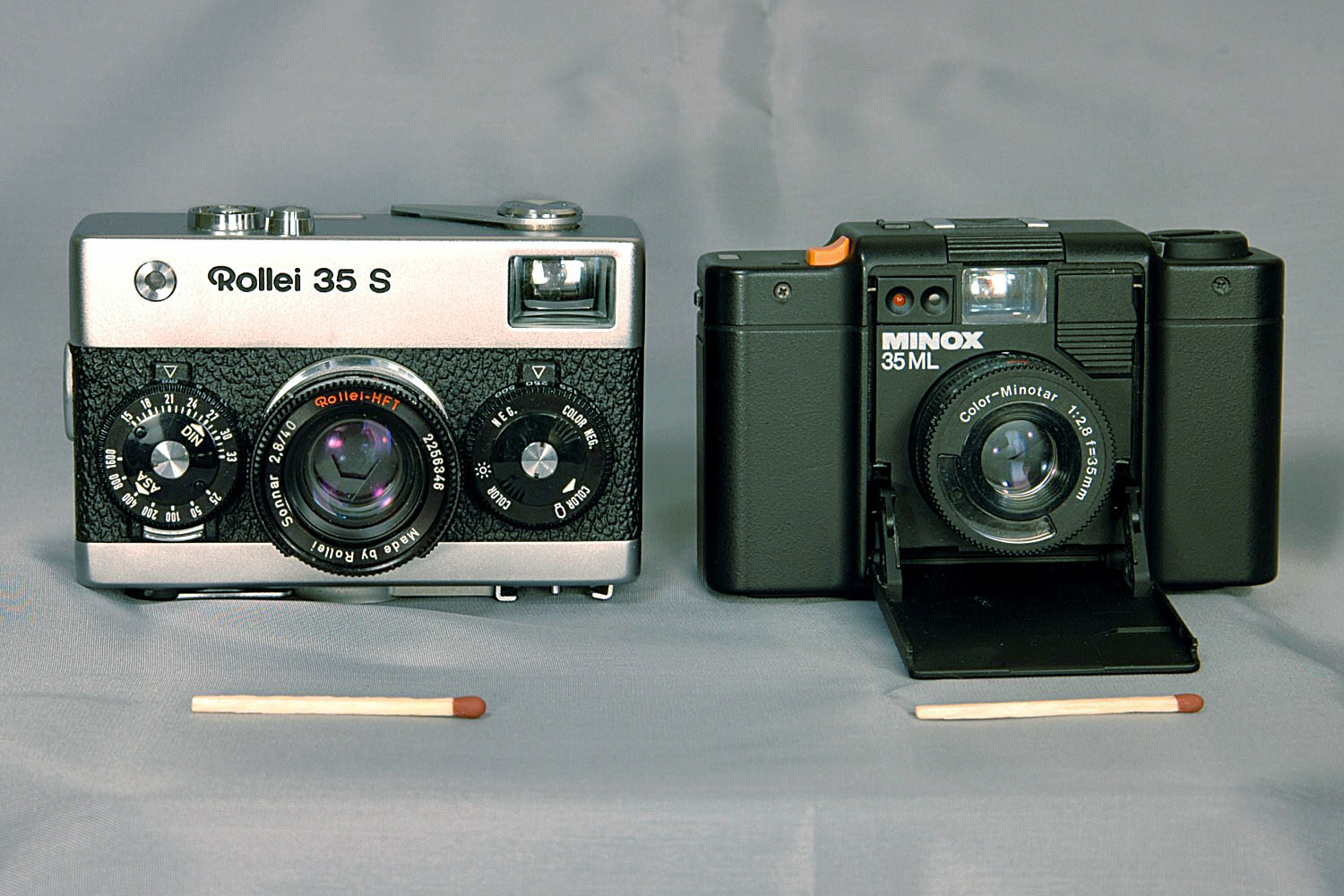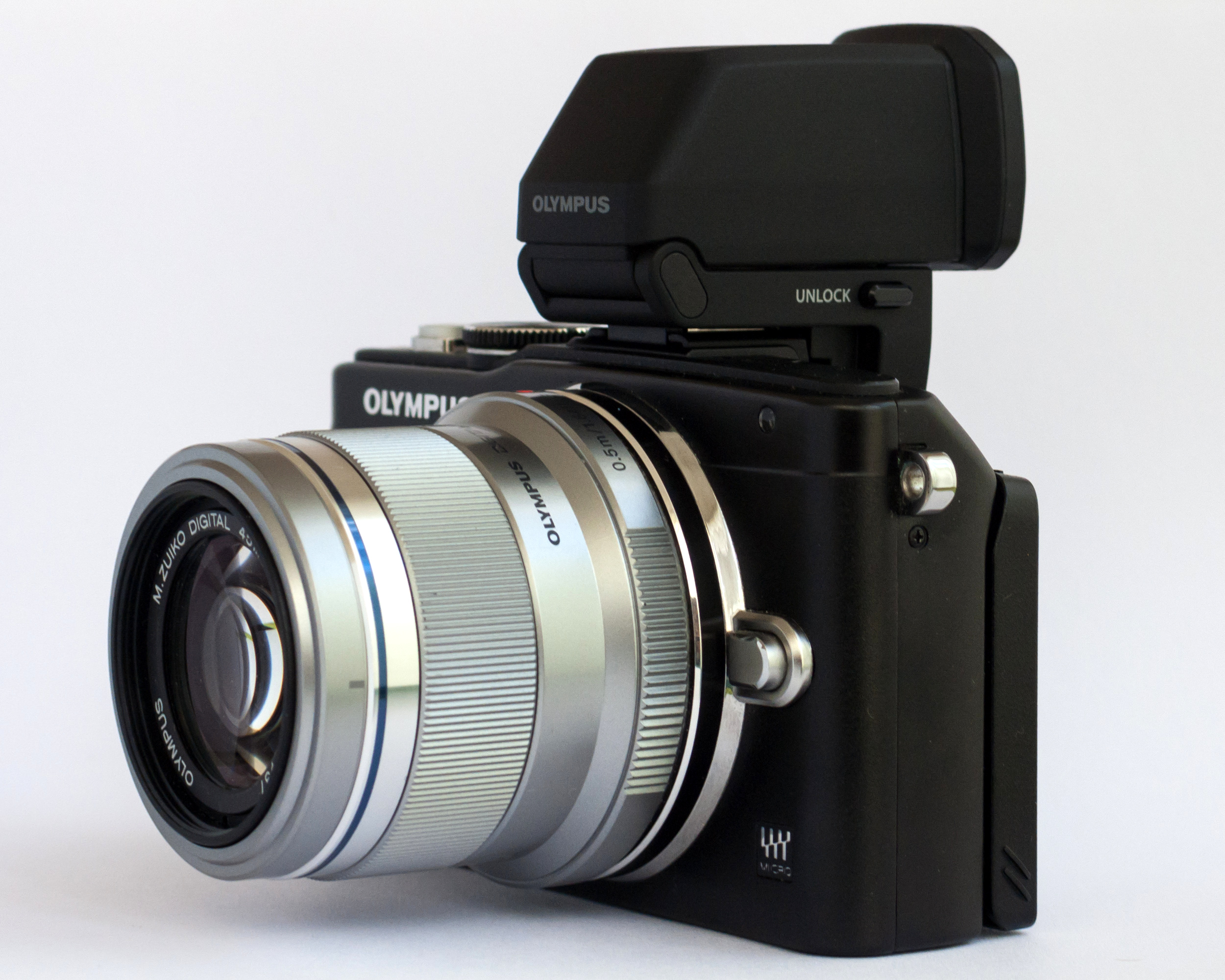|
Leica Q3
The Leica Q3 is a full-frame fixed-lens camera introduced in 2023 as the successor to the Leica Q2. Specifications The Q3 has a stabilized 28 mm 1.7 Summilux lens with digital crop modes corresponding to 35 mm equivalent focal lengths of 35, 50, 75, and 90 mm. The Q3 features a 60-megapixel CMOS full-frame sensor, measuring 36 x 24 mm — the same resolution and perhaps the same sensor found in the Leica M11 and the Sony α7R V. The Q3 is capable of 8K video recording at up to 30 frames per second and features phase-detection autofocus. The Q3's high resolution OLED electronic viewfinder has a resolution of 5.76 million dots. For the first time in the Leica Q series, the Q3 includes a tilting screen. The mechanism protrudes from the back, facilitating photographing from different angles not at eye level. The Q3 also offers "Leica Looks" that can be downloaded to the camera. These are similar to Fujifilm's film simulations or Adobe's Lightroom presets ... [...More Info...] [...Related Items...] OR: [Wikipedia] [Google] [Baidu] |
Phase-detection Autofocus
An autofocus (AF) optical system uses a sensor, a control system and a motor to focus on an automatically or manually selected point or area. An electronic rangefinder has a display instead of the motor; the adjustment of the optical system has to be done manually until indication. Autofocus methods are distinguished as active, passive or hybrid types. Autofocus systems rely on one or more sensors to determine correct focus. Some AF systems rely on a single sensor, while others use an array of sensors. Most modern SLR cameras use through-the-lens optical sensors, with a separate sensor array providing light metering, although the latter can be programmed to prioritize its metering to the same area as one or more of the AF sensors. Through-the-lens optical autofocusing is usually speedier and more precise than manual focus with an ordinary viewfinder, although more precise manual focus can be achieved with special accessories such as focusing magnifiers. Autofocus accuracy ... [...More Info...] [...Related Items...] OR: [Wikipedia] [Google] [Baidu] |
Point-and-shoot Cameras
A point-and-shoot camera, also known as a compact camera and sometimes abbreviated to P&S, is a still camera (either photographic film, film or digital camera, digital) designed primarily for simple operation. Most use focus free lenses or autofocus for Focus (optics), focusing, automatic systems for setting the Exposure (photography), exposure options, and have Flash (photography), flash units built in. They are popular for vernacular photography by people who do not consider themselves photographers but want easy-to-use cameras for Snapshot (photography), snapshots of vacations, parties, reunions and other events. Most compact digital cameras use small 1/2.3-type (“1/2.3-inch”) image sensors, but since 2008, a few non-interchangeable lens compact cameras use a List of large sensor fixed-lens cameras, larger sensor such as 1.0-type (“1-inch”), APS-C (e.g. Fujifilm X100 series), or even 35mm format, full frame (e.g. Sony Cyber-shot DSC-RX1, Sony RX1 series). Most models p ... [...More Info...] [...Related Items...] OR: [Wikipedia] [Google] [Baidu] |
Full-frame Mirrorless Fixed-lens Cameras
Full frame may refer to: * 35mm format * Full frame (cinematography) * Full-frame type charge-coupled device A charge-coupled device (CCD) is an integrated circuit containing an array of linked, or coupled, capacitors. Under the control of an external circuit, each capacitor can transfer its electric charge to a neighboring capacitor. CCD sensors are a ... (CCD) image sensor See also * Full-frame digital SLR * Full-frame mirrorless interchangeable-lens camera {{disambiguation ... [...More Info...] [...Related Items...] OR: [Wikipedia] [Google] [Baidu] |
List Of Retro-style Digital Cameras
This is a list of retro-style digital cameras, categorized into five body types: * modular cameras with a digital back, * true rangefinder cameras (without autofocus), * rangefinder-style mirrorless cameras, * digital single-lens reflex cameras (DSLRs), * and SLR-style mirrorless cameras. These cameras are designed to resemble and are often mistaken for vintage film cameras. Models that are currently in production are shown in bold. See also * List of digital cameras with CCD sensors * List of large sensor fixed-lens cameras * List of lightest mirrorless cameras Notes References {{reflist Cameras by type Digital cameras Digital cameras A digital camera, also called a digicam, is a camera that captures photographs in digital memory. Most cameras produced today are digital, largely replacing those that capture images on photographic film or film stock. Digital cameras are now ... Lists of cameras ... [...More Info...] [...Related Items...] OR: [Wikipedia] [Google] [Baidu] |
Summicron
The name Summicron is used by Leica to designate camera lenses that have a maximum aperture of f/2 after 1953 and to present day. History The name Summicron is derived from ''summus'', latin word for maximum and ''kronos'', the ancient Greek word for time. In the 1950s Leica bought Crown glass from Chance Brothers, an English company and used it to make the lenses. Leica designed a number of f/2 lenses before the Summicron, such as the Summar and Summitar. New coating technologies available after World War II allowed for the creation of the Summicron lens. The first Summicron was an evolved Summitar collapsible 50mm with Lanthanum glass, and was launched in 1953. Generations before approximately 1960 were produced in M39 mount ("screw mount"), then made available in M-mount (Latch-on A42), R-mount, and C-mount. Description The Summicron lenses have a maximum f-number of f/2. Market position Faster Leica lenses are offered with the trade names Noctilux (or Nocticron) and Sum ... [...More Info...] [...Related Items...] OR: [Wikipedia] [Google] [Baidu] |
Apochromat
An apochromat, or apochromatic lens (apo), is a photographic or other lens that has better correction of chromatic and spherical aberration than the much more common achromat lenses. The prefix ''apo-'' comes from the Greek preposition ''ἀπό-'', meaning free from or away from. Explanation Chromatic aberration is the phenomenon of different colors focusing at different distances from a lens. In photography, chromatic aberration produces soft overall images, and color fringing at high-contrast edges, like an edge between black and white. Astronomers face similar problems, particularly with telescopes that use lenses rather than mirrors. ''Achromatic'' lenses are corrected to bring ''two'' wavelengths into focus in the same plane – typically red (~0.590 μm) and blue (~0.495 μm). ''Apo''chromatic lenses are designed to bring ''three'' colors into focus in the same plane – typically red (~0.620 μm), green (~0.530 μm), and blue (~0.465 μ ... [...More Info...] [...Related Items...] OR: [Wikipedia] [Google] [Baidu] |
Ricoh GR III
The Ricoh GR is a digital large sensor compact camera announced by Ricoh on April 17, 2013, one of a number of Ricoh GR digital cameras. It was succeeded by the Ricoh GR II in 2015, the Ricoh GR III in 2019, and the GR IIIx in 2021. Ricoh GR Unlike its predecessors (the " GR Digital" series), the Ricoh GR incorporated an APS-C image sensor, while retaining a relatively compact form factor. Coupled with its retractable lens, the GR is potentially the slimmest of any camera in its class when powered off. Aside from portability, reviewers praised the GR for its lens quality and ergonomics. An unusual feature of the Ricoh GR was its built-in ND filter. Its maximum shutter speed was variable, depending on the aperture setting (ie, 1/4000s was only available at apertures smaller than 5.6). The Ricoh GR series has been compared against the Nikon Coolpix A and the Fujifilm X70, other large sensor compacts with the same fixed focal length (28mm). Ricoh GR II DPReview said that over ... [...More Info...] [...Related Items...] OR: [Wikipedia] [Google] [Baidu] |
Fujifilm X100VI
The Fujifilm X100 is a series of digital compact cameras with a fixed prime lens. Originally part of the Fujifilm FinePix, FinePix line, then becoming a member of the Fujifilm X series, X series from Fujifilm, the X100 series includes the FinePix X100, X100S, X100T, X100F, X100V, and X100VI. They each have a large image sensor and a 23 mm lens (35 mm 35 mm equivalent focal length, equivalent angle of view in Full-frame digital SLR, full frame format). All six cameras have received generally positive reviews. The Fujifilm FinePix X100 was initially shown at the photokina 2010, Photokina show in September 2010 and was subsequently introduced in February 2011. It was the first model in the Fujifilm X-series of cameras and has since been joined by numerous models. It is superseded by the Fujifilm X100S. Fujifilm FinePix X100 The FinePix X100, the original model in the line, was introduced in 2011. This was the first camera in what would grow to become the Fujifilm X series althou ... [...More Info...] [...Related Items...] OR: [Wikipedia] [Google] [Baidu] |
Sony RX1R
The Sony Cyber-shot DSC-RX1 is a series of premium fixed-lens full-frame digital compact cameras made by Sony as part of its Cyber-shot line. The DSC-RX1 was announced in September 2012. The DSC-RX1R, released in 2013, is a variant of the Sony DSC-RX1 without anti-aliasing filter in front of the image sensor. In 2015, both models were succeeded by the DSC-RX1R II. Cyber-shot DSC-RX1 The DSC-RX1 was the world's first fixed-lens, full-frame digital compact camera, and as of its announcement, was the world's smallest full-frame digital camera but is also considerably more expensive than most other compact cameras. It was announced in September 2012. Notable features The DSC-RX1 features a 35 mm f/2 Zeiss Sonnar lens with leaf shutter capable of a minimum shutter speed of 1/2000 s (for apertures 2.0 to 4.0), 1/3200 s (for apertures down to 5.6), and even 1/4000 s (for smaller apertures down to 22). The camera is equipped with a 24.3-megapixel full-frame CMOS ... [...More Info...] [...Related Items...] OR: [Wikipedia] [Google] [Baidu] |
Electronic Viewfinder
An electronic viewfinder (EVF) is a camera viewfinder where the image captured by the lens is displayed on a small screen (usually LCD or OLED) which the photographer can look through when composing their shot. It differs from a live preview screen in being smaller and shaded from ambient light, and may also use less power. The sensor records the view through the lens, the view is processed, and finally projected on a miniature display which is viewable through the eyepiece. Digital viewfinders are used in digital still cameras and in video cameras. Some cameras (such as Panasonic, Sony, Fujifilm) have an automatic eye sensor which switches the display from screen to EVF when the viewfinder is near the eye. More modest cameras use a button to switch the display. Some have no button at all. While many cameras come with a built-in EVF, this is fixed in place and can only be used while holding the camera to the user's eye, which may not be convenient. Other cameras don't come with ... [...More Info...] [...Related Items...] OR: [Wikipedia] [Google] [Baidu] |
OLED
An organic light-emitting diode (OLED), also known as organic electroluminescent (organic EL) diode, is a type of light-emitting diode (LED) in which the emissive electroluminescent layer is an organic compound film that emits light in response to an electric current. This organic layer is situated between two electrodes; typically, at least one of these electrodes is transparent. OLEDs are used to create digital displays in devices such as television screens, computer monitors, and portable systems such as smartphones and handheld game consoles. A major area of research is the development of white OLED devices for use in solid-state lighting applications. There are two main families of OLED: those based on small molecules and those employing polymers. Adding mobile ions to an OLED creates a light-emitting electrochemical cell (LEC) which has a slightly different mode of operation. An OLED display can be driven with a passive-matrix (PMOLED) or active-matrix ( AMOLED) c ... [...More Info...] [...Related Items...] OR: [Wikipedia] [Google] [Baidu] |


